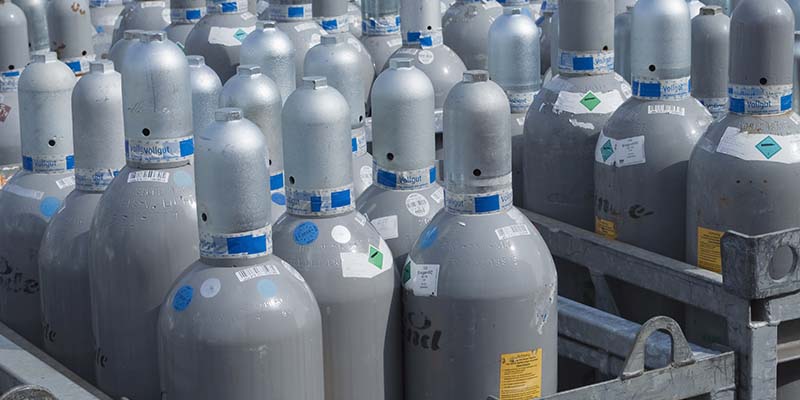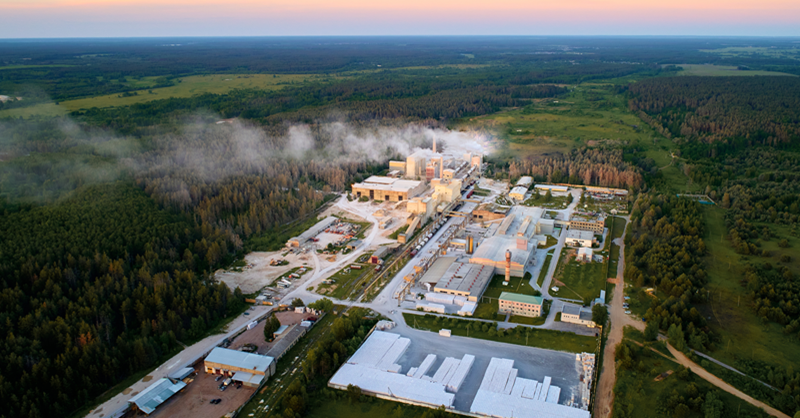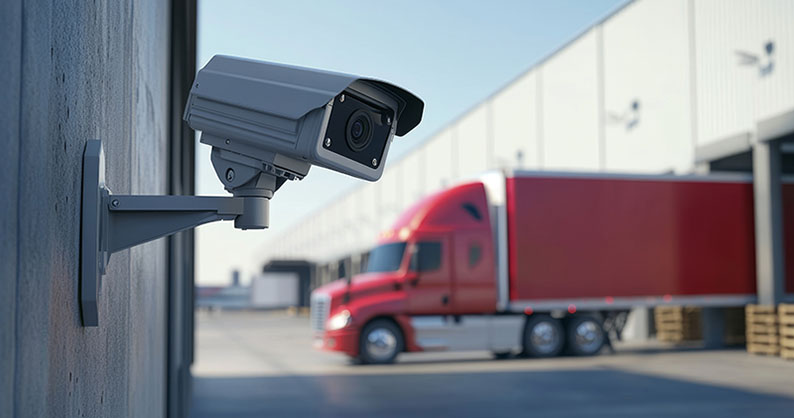Safely Use Pressurized Gas Cylinders

Gas cylinders present a unique risk for organizations. When gas leaks from cylinders, it is often impossible to see or hear. The Office of Congressional Workplace Rights found that thousands of injuries related to pressurized containers are caused every year. If the neck of a pressurized cylinder is accidentally broken off, the energy released would be sufficient to propel the cylinder to over three-quarters of a mile in height. A standard 250 cubic foot cylinder pressurized to 2,500 PSIG (33 pounds) can become a rocket attaining a speed of 34 miles per hour in one-tenth of a second after venting from the broken cylinder connection.
Organizations can protect themselves by implementing workplace procedures to protect their employees from the dangers of compressed gases:
- Protect the Cylinder
- Protect the Property Surrounding the Cylinder
- Protect the Handling of the Cylinder
Proper storage and periodic cylinder checks are perhaps the most important prevention techniques that organizations can employ. Pressurized gas cylinders should be stored and moved per the Occupational Safety and Health Administration (OSHA) standard 1910.253 Oxygen-fuel Gas Welding and Cutting. Standards for the storage of compressed gases, Acetylene, Hydrogen, Oxygen and Nitrous Oxide can be found in section 1910.101-105. Organizations should adhere to the following procedures:
Protect the Cylinder
- Secure empty and full cylinders with chains, and enclose them within a cylinder storage cabinet.
- Keep protective valve caps in place when the cylinder is not in use.
- Mark or add an identifying tag to empty cylinders.
- Keep valves closed on all empty cylinders.
- Separate empty and full fuel cylinders when stored.
- Store out of direct sunlight in the summer, and protect from accumulations of ice and snow in the winter. When cylinders are stored in heat, this may cause pressure relief valves to vent and release gases that are stored in the cylinder. This released gas is highly flammable and can cause spontaneous combustion.
- Do not use copper fittings or tubing on acetylene tanks. Copper metal will explode when it comes into contact with acetylene.
Protect the Property Surrounding the Cylinder
- Keep oxygen cylinders a minimum distance of 20 feet from flammable gas or combustible materials. If this cannot be done, separate with a noncombustible barrier at least 5 feet high having a fire rating of at least one-half hour.
- Leaking cylinders should be taken outdoors away from sources of ignition. Such cylinders should be tagged, and the supplier should be promptly notified.
- Storage should not exceed 300 pounds per cabinet. Additional storage should be a minimum of 300 feet away.
- Post safety data sheets in a conspicuous area. Safety data sheets are given by chemical orders that are sent to manufacturers or can be found on a manufacturer’s website for download.
- Do not store flammable gases near an exit or next to an oxygen tank/cylinder.
Protect the Handling of the Cylinder
- Use a cylinder cart with the chain restraint in place.
- Do not use slings or electric magnets.
- Do not use cylinders as rollers for moving material or equipment.
- Only move cylinders once a protective valve cap has been installed.
- Never allow cylinders to be moved by one employee alone.
Standard Operating Procedures
Organizations should put into place a standard operating plan for handling cylinders as well as the usage of the cylinders. Standard operating procedures should include the following sections:
- Applicable Hazards
- Fire Hazards
- Chemical Burns (If the gas being stored is corrosive)
- Asphyxiation Concerns
- Hazards Unique to the Organization
- Handling and Storage
- Gas Cylinder Identifying Information
- Operating Pressures
- Gas Type
- Manufacturing Information
- Appropriate Gages and Flow Valves
- Cylinder Moving Standards (Appropriate moving procedures will change based on the size of the cylinder and gas type)
- Storage Procedures
- Storage Locations
- Maximum Storage Allowed
- Securing Procedures
- Emergency Information
- Emergency Contacts and Hotlines
- Leaking Cylinder Handling
- SDS Sheets
- Safety Checks
The operating procedures for organizations will change based upon the size of the organization, type of gas used and the size/amount of compressed gas that is on-site. The location of the organization also plays a pivotal role in understanding the care that should be applied to it. Whether it’s a chemical lab that uses dangerous gases for testing or a lumber yard that uses propane forklifts, all organizations dealing with compressed gases should have readily available safety material to protect their employees and customers.
Resources








.jpeg?sfvrsn=dbf923b1_1)




.jpeg?sfvrsn=c50521b1_1)
